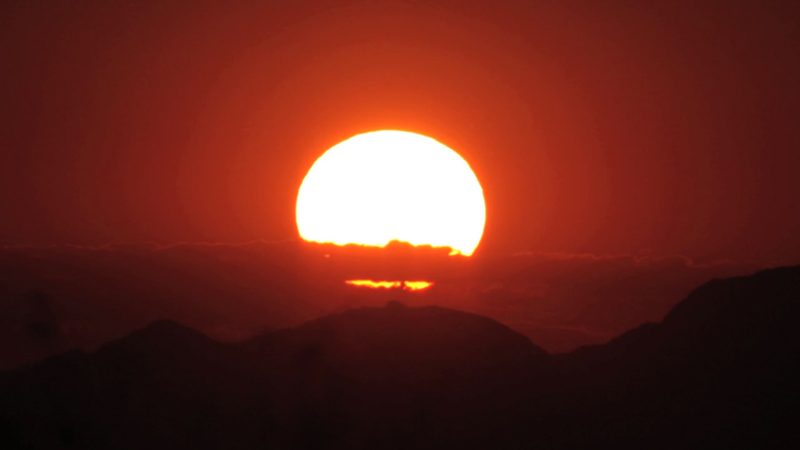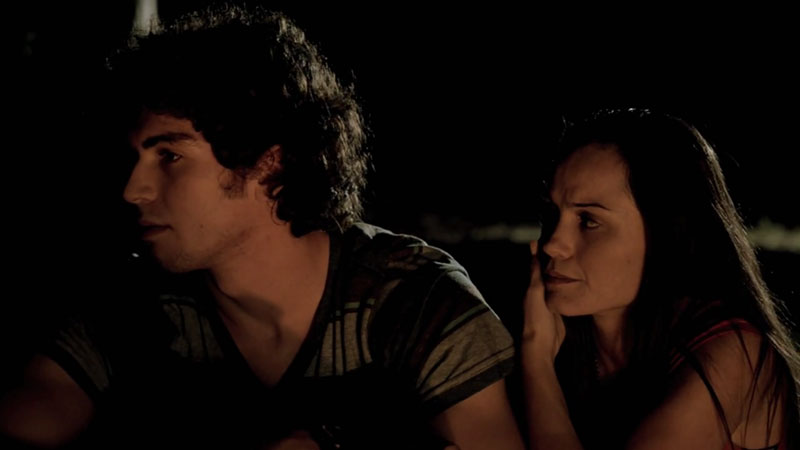Adahy Tohopka

Adahy Tohopka
Screenplay by Freddie Robinson Jr. | Review by Prarthana Mitra
Good American pastiche is hard to come by these days as most contemporary filmmakers choose not to get embroiled in the politically insensitive myths and often misappropriating legends of the American heartland. But these local myths of savagery, cannibalism, which find lurid expression in newspaper and police reports of missing people, are also great sources of blood-curdling stories. Director Freddie Robinson Jr. takes one such myth, one that continues to instill fear and intrigue into the hinterland of Florida Everglades, alleged home to an exiled Indian who terrorizes and feasts on marooned tourists. Robinson rounds up a posse of American stereotypes straight out of nineties films, and documents their voyage across the Everglades, as they ride to their doom. This group of tourists is taken on a boat trip by a young ferryman and a couple of his friends— there’s an elderly couple, an African American man with his son, a creepy middle-aged man and a bounty hunter.

From the beginning, Robinson depicts a chasm between these urban dwellers’ understanding of the primitive, and the heart of darkness they sail into; the exotic flavor lending the film a Conradian flavor. This cross-section of Americana is enjoyable at first, but soon it devolves into banter and crass passes until all hell breaks loose when they enter a prohibited part of the marshland. They feed hungry alligators and take photographs, only to have the tables turned on them. An internal chaos is evident when the elderly man gets bitten by a snake, and one of the girls is assaulted. This later echoes the massacre of the group at the hands of a bloodthirsty savage in an impressionably graphic climax. Robinson means for it to be a tribute to all those tourists who got lost in the glades but were never found or reported. There is a non-fictional undercurrent running throughout the length of the film—something about Robinson’s presentation that screams “based on a true story”. At the same time, the narrative begins with a rock song which instantly unsettles the sombreness of the opening montage (evidence footage) and we are reeled into a world we know would soon meet with spectacular violence and gore.

The dialogues are snappy and reek of colloquialism, thus rendering the exchanges authentic and easy to follow. Each character has been represented quite well in so much as they play their part in bringing about their own misfortune, the most interesting characters being the bounty hunter and the cannibal Adahy Tohopka himself. Coming to the direction of sound and photography, the film maintains the kitschy quality for its entire duration— tonally reminiscent of old survival documentaries on National Geographic, only with a horrid twist in the end. Production design, makeup and costume score high points for making the events unfolding in the latter half of the film so believable, from the booby traps to the fatal venomous wound to the indiscriminate slaughter. In its unabashedness to portray gore and cannibalism, the film is as fearless as the Italian Giallo genre or the Japanese Yakuza films. What about the philosophic takeaway from the film you ask? Well, Adahy Tohopka does portray the shallowness of these tourists’ lives and some of their ignominious motives, but in sparing the antagonistic Indian, the film draws attention to a raging problem for tourists in Florida. More importantly perhaps, it drives home the message that the primitive is best left alone.
 Prarthana is presently in between odd jobs and obtaining her master’s degree in literature. She loves modern poetry and meditative cinema. Based out of Calcutta, Prarthana observes people, football, films and enjoys writing about all three. Of late, she relates to Frank Ocean’s music. Her writing experience consists of writing for various sites such as Try Cinema, The Indian Economist, Doing The Rondo, Saintbrush and various academic journals.
Prarthana is presently in between odd jobs and obtaining her master’s degree in literature. She loves modern poetry and meditative cinema. Based out of Calcutta, Prarthana observes people, football, films and enjoys writing about all three. Of late, she relates to Frank Ocean’s music. Her writing experience consists of writing for various sites such as Try Cinema, The Indian Economist, Doing The Rondo, Saintbrush and various academic journals.


